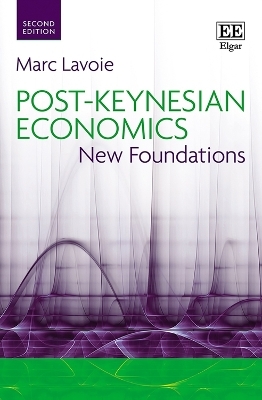
EMU — A Swedish Perspective
Springer (Verlag)
978-0-7923-9990-2 (ISBN)
The book provides an in-depth analysis of how the demands on economic policy will be affected by the monetary union. Various chapters discuss monetary policy and inflation, fiscal policy, unemployment and labour markets, the transition to monetary union, and the exchange-rate arrangements between participants and non-participants. Other chapters analyse the importance of the EMU for European political integration, democratic aspects, and how membership in the monetary union will affect the possibilities for an individual member state to exert influence within the EU.
EMU - A Swedish Perspective should be of interest to professional economists and political scientists, students, and all others who want to form an opinion about the monetary union on the basis of a balanced assessment of the consequences. EMU - A Swedish Perspective provides a comprehensive and up-to-date survey of the EMU project. The main advantages and disadvantages of a single currency are evaluated. A key feature of the analysis is the attempt to integrate economic and political aspects. The book is a revised version of the report by the Swedish Government Commission on the EMU. Although the analysis focuses on the consequences for Sweden of joining versus not joining the monetary union, it is highly relevant for the discussion in all EU countries.
1 Introduction.- 1.1 The aim of the book.- 1.2 The structure of the book.- 2 The Emu Project.- 2.1 Economic and monetary co-operation in Europe in a historical perspective.- 2.2 The Maastricht Treaty: objectives, timetable, and convergence criteria.- 2.3 The role and organisation of the European Central Bank.- 2.4 Other central EU institutions and bodies.- 2.5 The reference scenario — a detailed plan for the transition to the monetary union.- 3 Currencies and Exchange-Rate Systems — A Background.- 3.1 The role of a national currency.- 3.2 Exchange-rate systems.- 3.3 Experiences of different exchange-rate systems.- 3.4 Conclusions.- 4 The Emu and Social Efficiency.- 4.1 Reduced transaction costs.- 4.2 Exchange-rate fluctuations and effects on foreign trade, foreign direct investment, and interest rates.- 4.3 Effects on competition.- 4.4 Effects of lower inflation.- 4.5 Effects on seigniorage.- 4.6 Conclusions.- 5 Macroeconomic Disturbances and Monetary Policy.- 5.1 Monetary policy in an open economy.- 5.2 Exchange-rate policy and the effects of macroeconomic disturbances.- 5.3 What constitutes a suitable currency area?.- 5.4 Do floating exchange rates have destabilising effects?.- 5.5 Conclusions.- 6 Inflation and the Credibility of Monetary Policy.- 6.1 The basic inflation and credibility problem.- 6.2 Methods for dealing with the credibility problem.- 6.3 The monetary union, the credibility problem and inflation.- 6.4 Sweden’s ability to handle the credibility problem independently and the position of the Riksbank.- 6.5 Conclusions.- 7 Fiscal Policy and the Emu.- 7.1 The development of public finances.- 7.2 The Maastricht Treaty and fiscal policy.- 7.3 The arguments for fiscal policy rules.- 7.4 The scope for stabilisation policy.- 7.5 Does the monetary unioninvolve further demands for fiscal policy integration?.- 7.6 Conclusions.- 8 The Labour Market and the Monetary Union.- 8.1 Equilibrium unemployment, long-term unemployment, and economic policy.- 8.2 Macroeconomic disturbances and the need for labour-market adjustment.- 8.3 Nominal wage and price rigidities.- 8.4 Labour mobility.- 8.5 A strategy to combat unemployment in Sweden.- 8.6 A common European policy against unemployment?.- 8.7 Summary.- Appendix: The effect of a change in relative labour costs on exports and imports — a rough estimate.- 9 The Emu as a Political Project.- 9.1 Economic and political integration: the continental model.- 9.2 The EMU’s role in European integration.- 9.3 The EU as a negotiating system.- 9.4 Franco-German co-operation.- 9.5 The formation of the EMU: the negotiations 1988–91.- 9.6 The EMU and differentiated integration.- 9.7 Political risks associated with the EMU.- 9.8 Summary and conclusions.- 10 The Emu, Democracy, and Sweden’s International Influence.- 10.1 Democratic control and accountability.- 10.2 The EMU and the moulding of political opinion.- 10.3 The EMU and Sweden’s foreign-policy relations.- 10.4 Conclusions.- 11 Transition Problems.- 11.1 The Maastricht Treaty’s decision-making procedure and convergence criteria.- 11.2 The appropriateness of the convergence criteria.- 11.3 Economic conditions for a monetary union in 1999.- 11.4 Political conditions for a monetary union in 1999.- 11.5 An overall assessment of the conditions for a monetary union in 1999.- 11.6 Other transition problems.- 11.7 Conclusions.- 12 Exchange-Rate Arrangements between Participants in the Monetary Union and Non-Participants.- 12.1 The future ERM system.- 12.2 Advantages and disadvantages of a new ERM system.- 12.3 Alternativeexchange-rate arrangements.- 12.4 Conclusions.- 13 Summary and Conclusions.- 13.1 Social efficiency aspects.- 13.2 Stabilisation-policy arguments.- 13.3 Political aspects.- 13.4 Conclusions about the EMU project as a whole.- 13.5 Conclusions about Sweden’s participation in the monetary union.- 13.6 Critical factors.- Statement of Dissenting Opinion by Nils Gottfries.- References.
| Zusatzinfo | XIV, 365 p. |
|---|---|
| Verlagsort | Dordrecht |
| Sprache | englisch |
| Maße | 155 x 235 mm |
| Themenwelt | Wirtschaft ► Volkswirtschaftslehre ► Finanzwissenschaft |
| Wirtschaft ► Volkswirtschaftslehre ► Makroökonomie | |
| ISBN-10 | 0-7923-9990-0 / 0792399900 |
| ISBN-13 | 978-0-7923-9990-2 / 9780792399902 |
| Zustand | Neuware |
| Haben Sie eine Frage zum Produkt? |
aus dem Bereich


